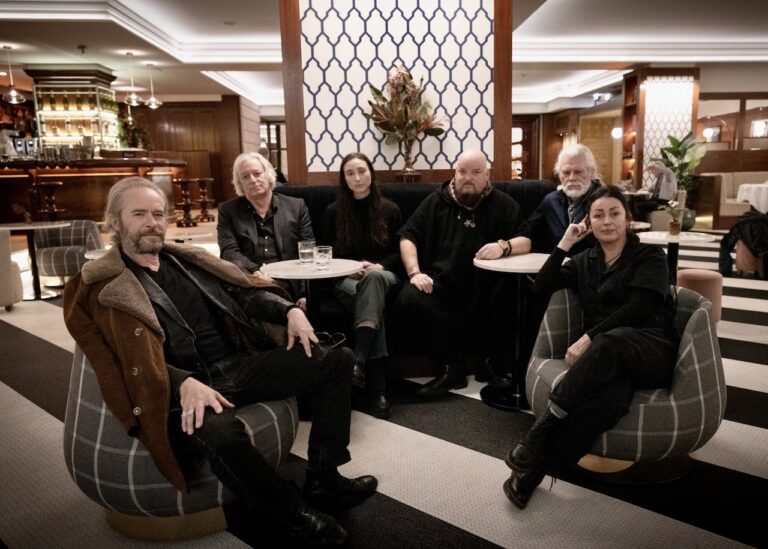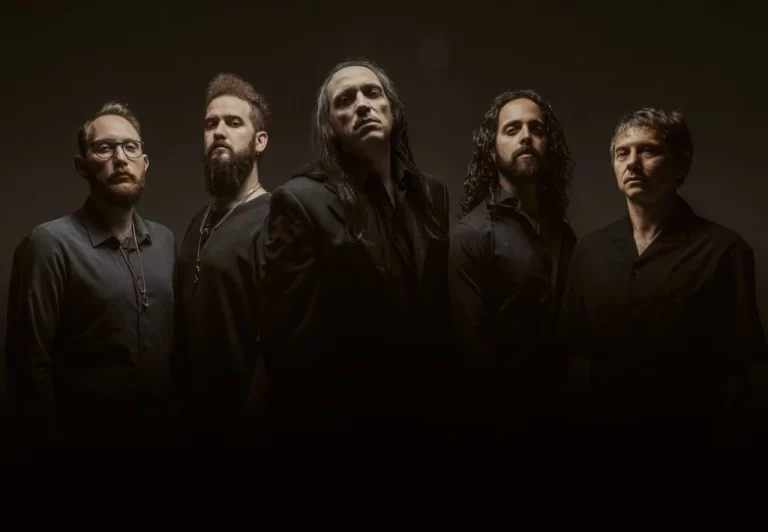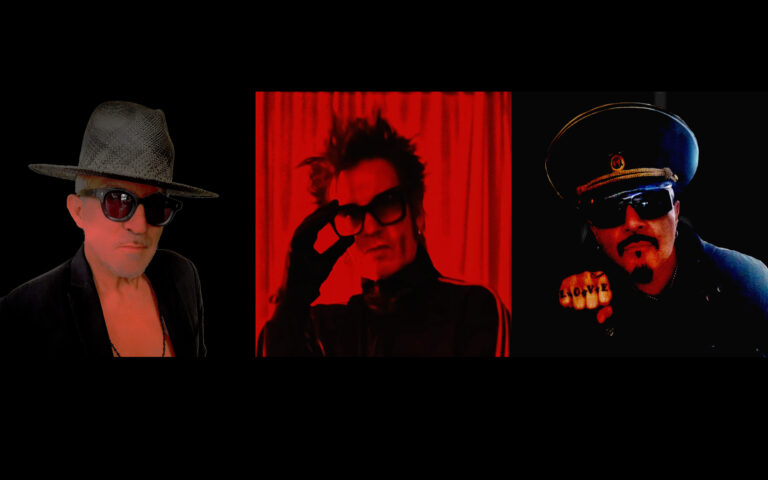One of the highlights of Download this year, Asinhell is a death metal project from Volbeat’s Michael Poulsen. For their debut album, the stunning Impii Hora, Micheal teamed up with drummer Marten Toft and vocalist Marc Grewe to deliver ten blistering tracks of old school death metal, influenced by the likes of Autopsy and Obituary. With the band joined on stage by producer Jacob Hansen on bass and guitarist Flemming C. Lund, Michael describes them as a band of brothers, and that’s exactly how they appear on stage.
A force to be reckoned with live, the band pretty much flattened the second stage at Download, making their mark and leaving Donnington’s muddy metallers somewhat awestruck in their wake. Fortunately, we had the chance to sit down with Michael and discuss the formation of the band, the process of recording, and the influences that led to the exceptional Impii Hora.
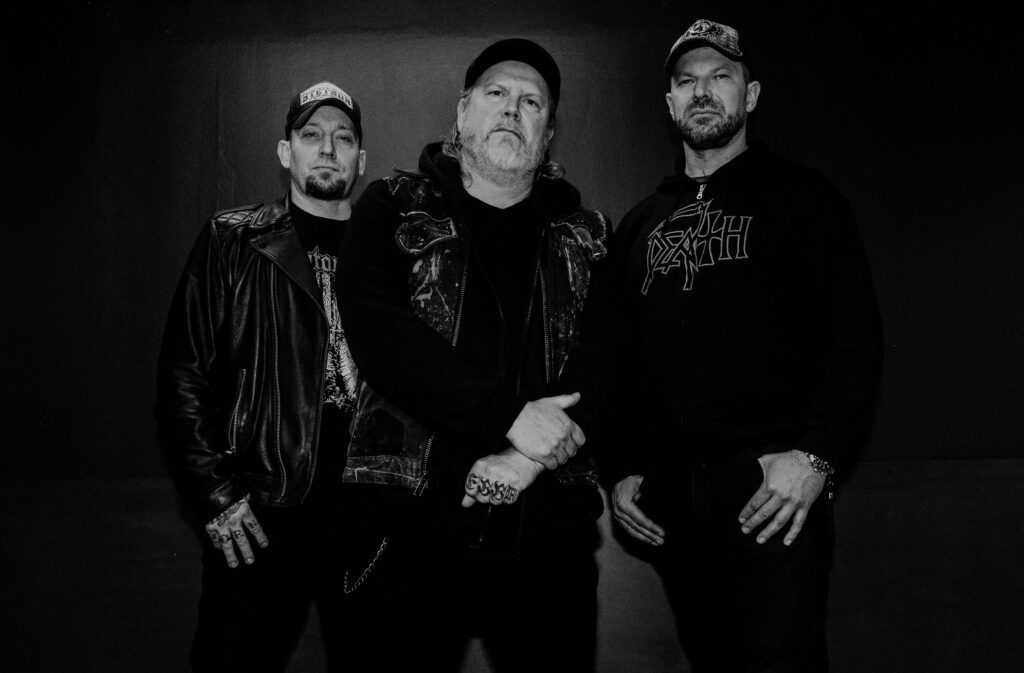
The first thing I wanted to ask is that because this is such a passion project for you, there’s a fine line between digging into the roots of your influences and finding a way to say something new whilst honouring what went before. How did you approach the song writing.
Yeah, the thing is, when I’m in the Volbeat bubble, I have to stay there because then it’s all about writing those songs where you have all these different styles combined. And, when I’m jumping into the Asinhell bubble, that’s pure, old-school death metal. I cannot really mix it into Volbeat, so it’s all about the passion for a lot of different styles, but also being able to focus on one thing at a time. Before we went on this tour with Asinhell, I told thew Volbeat guys that I’m starting to write new Volbeat material, and I need to finish it before I go on this tour, because when I go on this tour, I’ll be a death metal monster! And I’m not going to go home and start writing death metal for Volbeat.
Volbeat is going into the studio later this year to record a new album, it’s going to be out next year, and then there’ll be a Volbeat worldwide tour coming next year. Next year, I’ll probably also start writing for the next Asinhell album, so basically, I’m just enjoying being able to do this death metal thing again, because I’ve been listening to extreme music since I was 13, and I’ve been playing death metal since the very early 90s…
With Dominus, right?
With Dominus – until I put rest to that and then Volbeat came around and I’ve just been so extremely busy with Volbeat and touring, there was never really any time for a second project like this until the sad situation of the pandemic. And I suddenly had a lot more time at home to work on other stuff.
There’s such a great chemistry with you guys on stage. How did you choose the band?
They’re all good friends, and they’re all good friends from the past. We’ve known each other since we were like 17 years old. So, we know each other extremely well, and that’s a big part of what you can see – we’re having fun. It’s basically just five brothers having a great time.
That vibe comes over well really well on the album as well – it sounds like you had a blast recording it. Was it an old school production approach?
Well, when I started Asinhell, I started with it Morten Toft, the drummer. I said, “you know, it’s very important that we do it like we did it when we were 17 or 16 years old”. We didn’t have money for fancy rehearsal studio s or anything, so I said, “let’s just rehearse here in your garage”. There was no PA, just my amp cranked up to 11, and he just pounded his drums. No PA or anything. And that’s how we did it. And we booked the studio… some bands like to use months, but we figured that, when we were 16/17, we couldn’t even afford to be in the studio for a week. It was just 4 days and you had to get the job done. So, that’s pretty much what we did. We recorded the whole album in a week. And we wanted to record it live in the studio, so we could get that live feeling. Of course, we added a couple of guitars over the top to make the sound fat. It’s pretty much recorded very old school. It’s not analogue, but it’s recorded together, playing together in the studio, with producer Jacob Hansen; who also plays the bass now in Asinhell. When we were done, I said “you know what, I’m not going to play the bass”. I could do that, but I asked Jakob if he was into it, and he said it sounded like a lot of fun. And now he’s on the road with us as well, and we’ve got Flemming C. Lund on the guitar. Back in the day he had this metal band called Autumn Leaves. And now he has a band called the Arcane Order. But it’s guys that I’ve known for so many years that it’s not really that difficult. We understand each other and we all know where we come from. We’ve been touring in different bands together when we were very young. And now we’re just doing it together in the same band.
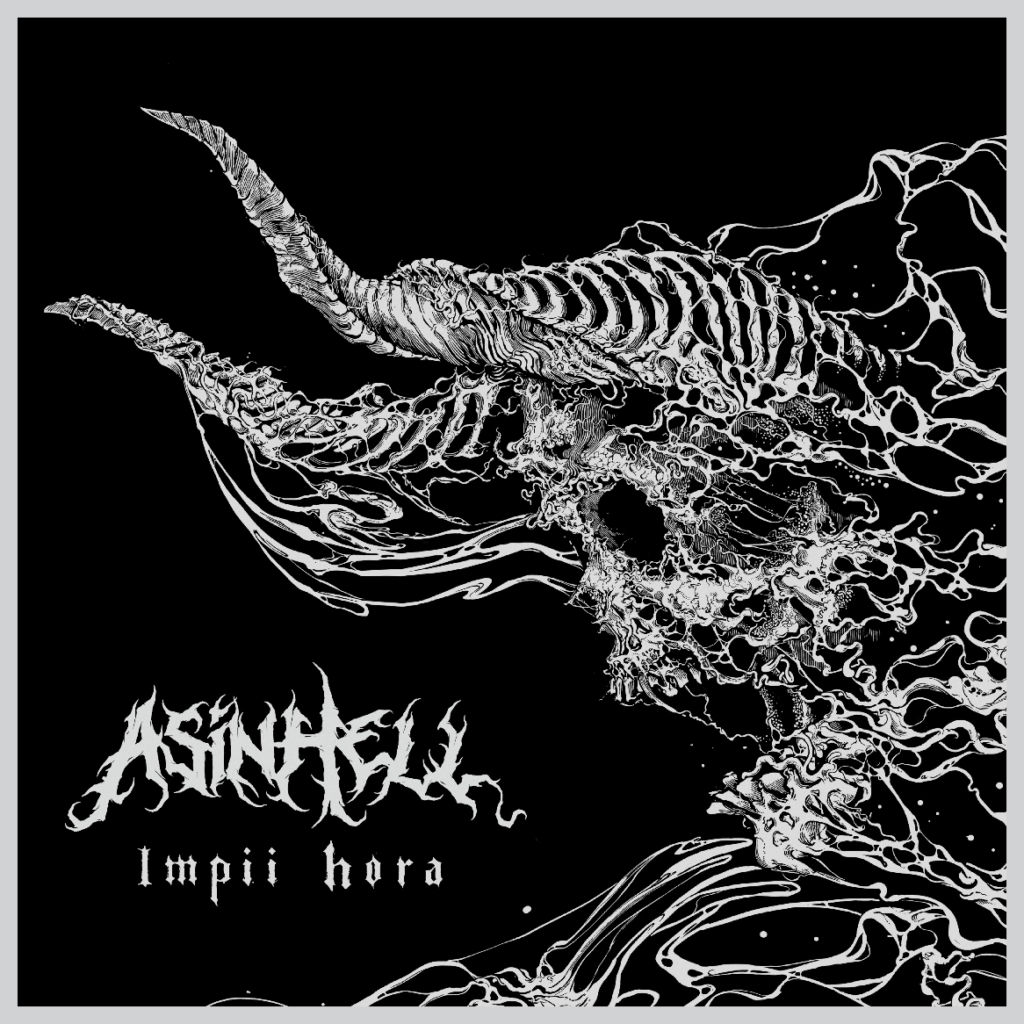
The artwork on the album is really cool – and death metal has that legacy of great art. How did you choose the artist and how involved were you in creating it.
It’s a Japanese guy called Albert Che. It was actually Marc Grewe, the frontman in Asinhell. I’ve known Marc for so many years, since discovering Morgoth back in the day. Me and Marc always talked about one day doing a death metal project, so I’m very proud to have Marc on board. But it was actually Marc who discovered Albert. He said I should check him out, and when I saw his work, I kind of recognised it, because I knew he’d done some stuff for Black Sabbath. I immediately liked what he was doing, so we sent him the lyrics and kind of told him a little bit about the band and sent him the music before it was even released. We said, “you know what – it’s just up to your sick brain to figure it out!” So, yeah, he was just listening to the music and reading the lyrics, and he came up with amazing artwork.
I think that’s the best way to get really good art – it’s where they have the music and lyrics and can just interpret it for themselves.
Yeah, put it in your brain and see what comes out.
You do a pair of covers – Death and Bolt thrower – choosing covers is quite a personal thing, because I guess you want tracks that mean something to you and that you can put your own spin on. How did you choose those particular tracks?
Well, when you listen to the record, it’s quite obvious who we’re inspired by and we’re very proud of it. So, it wasn’t really that tough. We knew we had to take a Death song, and we’re all huge fans of Chuck Schuldiner. So, that was a no brainer. The same thing with Bolt Thrower, you can hear the inspiration of Bolt Thrower in Asinhell music. And we have a medley where we have a little bit of Morgoth, Autopsy and Obituary. And those are bands that everybody’s been listening to for so many years, that it was easy to agree on.
From what you said earlier, it sounds like the music came before the lyrics – how did they get developed and who did the bulk of the writing on those.
Well, when I was writing the music for Asinhell, I always have the vocals in my mind. Back in the day when I played in Dominus, I was the frontman doing the growling. So, when I was sitting and writing the Asinhell stuff, I was just improvising my own words and growls, so I’d be sitting there, with my iPhone just [does death growl impersonation] and pretty much improvising words to give Marc something that he could hear where I wanted the lyrics to be. He really got inspired by that, so he asked a good friend, Frank, who has some kind of scientific degree in a lot of different sick projects and subjects. So, him and Marc sat down and did the lyrics together, and ended up using a lot of the improvised words that I did on the demo. And we were just talking to Frank about the certain subjects we wanted to have on the album.
For us, it was important that it was mixed with a lot of darkness, a lot of cliches, and a little bit of fun. Because, let’s be honest, when we sit down and read all the lyrics from a lot of the great death metal bands back in the day – a lot of them are actually quite funny. So, we twisted them around a little bit with some sense of humour, but between the lines, some really gory true stories are there.
And it’s interesting that you did it like that, because death metal very often has that almost rhythmic delivery, emphasizing the riffs.
Exactly, you’re right, yeah.
So, in terms of developing themes, did you have any overarching theme in mind?
No, it’s not like we had any themes – we didn’t want it to be a theme album. It’s all about – What Marc has done in the past; he was writing a lot of lyrics about serial killers and just the very dark mindset that mankind can have. And then, on top of that, as I said – mix it up with a little bit of humour and some of the scary things going on in the world today and has been going on since mankind has been born.
Amazing – thank you so much for your time.
Thanks man.

